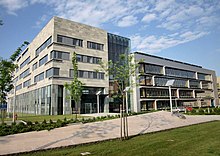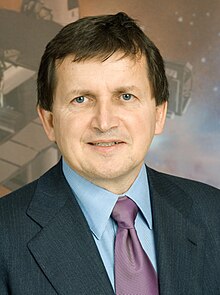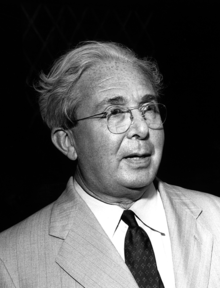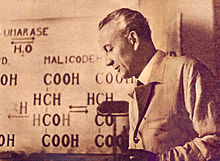
Back Венгрияла фән Bashkir Науката и технологијата во Унгарија Macedonian Мадьяронь Мастор Тонавтолмазо MYV Ciência e tecnologia na Hungria Portuguese Știința și tehnologia în Ungaria Romanian Наука в Венгрии Russian Наука в Угорщині Ukrainian








Science and technology is one of Hungary's most developed sectors.[2] The country spent 1.4% of its gross domestic product (GDP) on civil research and development in 2015, which is the 25th-highest ratio in the world.[3] Hungary ranks 32nd among the most innovative countries in the Bloomberg Innovation Index, standing before Hong Kong, Iceland or Malta.[4] Hungary was ranked 35th in the Global Innovation Index in 2023.[5]
In 2014, Hungary counted 2,651 full-time-equivalent researchers per million inhabitants, steadily increasing from 2,131 in 2010 and compares with 3,984 in the US or 4,380 in Germany.[6] Hungary's high technology industry has benefited from both the country's skilled workforce and the strong presence of foreign high-tech firms and research centres. Hungary also has one of the highest rates of filed patents, the 6th highest ratio of high-tech and medium high-tech output in the total industrial output, the 12th-highest research FDI inflow, placed 14th in research talent in business enterprise and has the 17th-best overall innovation efficiency ratio in the world.[7]
The key actor of research and development in Hungary is the National Research, Development and Innovation Office (NRDI Office), which is a national strategic and funding agency for scientific research, development and innovation, the primary source of advice on RDI policy for the Hungarian government, and the primary RDI funding agency. Its role is to develop RDI policy and ensure that Hungary adequately invest in RDI by funding excellent research and supporting innovation to increase competitiveness and to prepare the RDI strategy of the Hungarian Government, to handle the National Research, Development and Innovation Fund, and represents the Hungarian Government and a Hungarian RDI community in international organizations.[8]
The Hungarian Academy of Sciences and its research network is another key player in Hungarian R&D and it is the most important and prestigious learned society of Hungary, with the main responsibilities of the cultivation of science, dissemination of scientific findings, supporting research and development and representing Hungarian science domestically and around the world.[9]
- ^ "Leo Szilard". Encyclopedia Brittanica. Retrieved 25 April 2024.
- ^ Payne, David (8 March 2017). "Investing in science in Hungary : Naturejobs Blog". blogs.Nature.com. Archived from the original on 21 March 2019. Retrieved 23 December 2017.
Hungary ranks 35th in the world for quality research output, according to Nature Index's 2015–2016 data
- ^ "Research and development (R&D) – Gross domestic spending on R&D – OECD Data". data.oecd.org. Retrieved 10 February 2016.
- ^ "The Bloomberg Innovation Index". Bloomberg.
- ^ WIPO (30 November 2023). Global Innovation Index 2023, 15th Edition. World Intellectual Property Organization. doi:10.34667/tind.46596. ISBN 9789280534320. Retrieved 28 October 2023.
{{cite book}}:|website=ignored (help) - ^ "Researchers in R&D (per million people)". World Bank.
- ^ "Global Innovation Index – ANALYSIS – Hungary". Cornell University, INSEAD, and the World Intellectual Property Organization.
- ^ "The National Research, Development and Innovation Office". NRDI Office.
- ^ "MTA and Science (Infograpihcs)". Hungarian Academy of Sciences.
© MMXXIII Rich X Search. We shall prevail. All rights reserved. Rich X Search